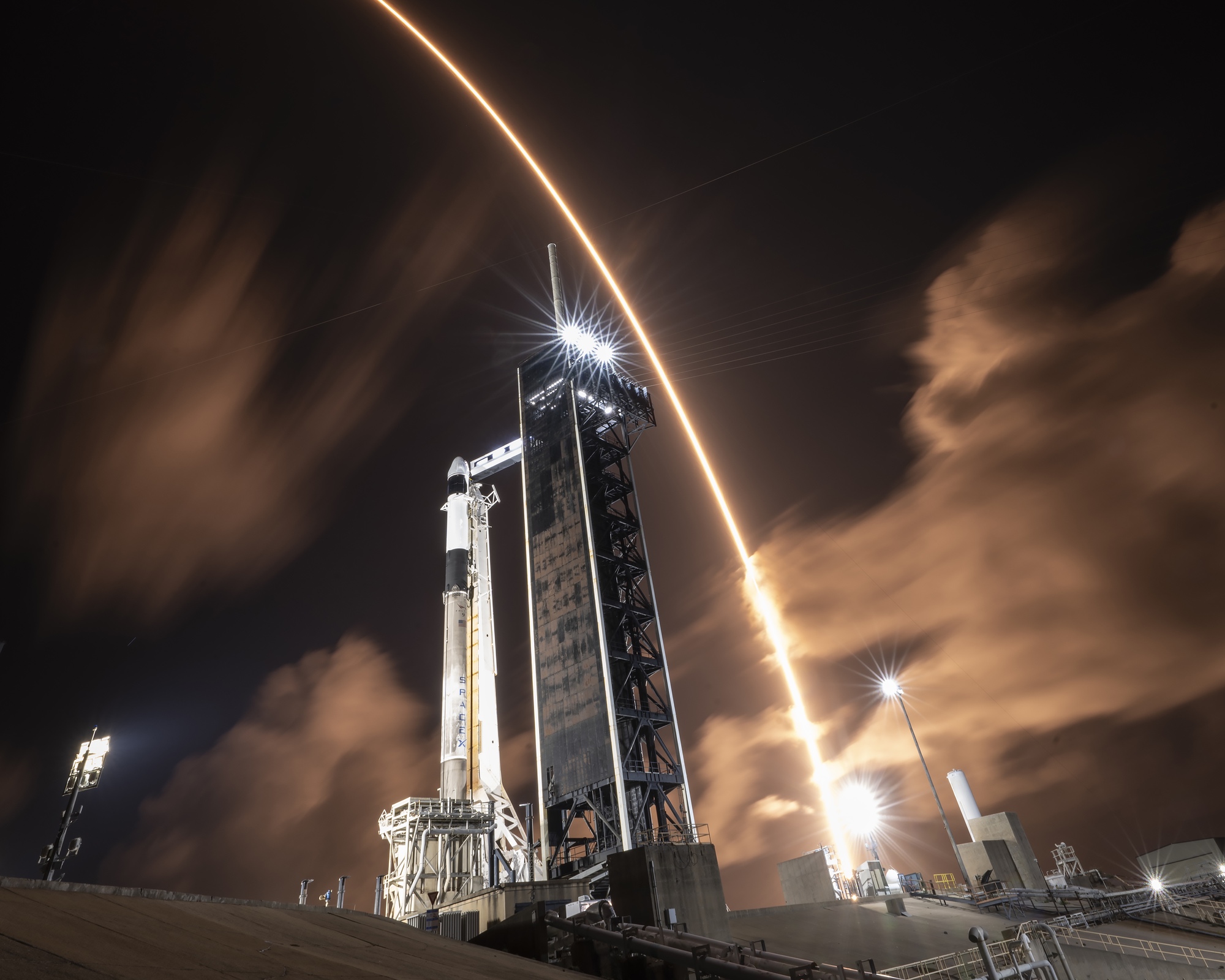WASHINGTON — SpaceX resumed launches of its Falcon 9 rocket early Aug. 31 after the Federal Aviation Administration ended a brief grounding of the vehicle.
One Falcon 9 lifted off from Cape Canaveral Space Force Station’s Space Launch Complex 40 at 3:43 a.m. Eastern, placing 21 Starlink satellites into orbit. It was followed at 4:48 a.m. Eastern by another Falcon 9 lifting off from Vandenberg Space Force Base’s Space Launch Complex 4E, also delivering 21 Starlink satellites to low Earth orbit. The 65 minutes between launches is the shortest interval yet between Falcon 9 launches.
The launches were the first by SpaceX since the Aug. 28 launch of a Falcon 9 where the booster was lost during landing on a droneship in the Atlantic Ocean. While the rocket successfully placed its payload of Starlink satellites into orbit, the Federal Aviation Administration ordered a halt in Falcon 9 launches later that day to investigate any public safety implications of the failed landing.
The FAA announced late Aug. 30 that it would allow launches to resume while the investigation continues.
“The SpaceX Falcon 9 vehicle may return to flight operations while the overall investigation of the anomaly during the Starlink Group 8-6 mission remains open, provided all other license requirements are met,” the agency said in a brief statement. “SpaceX made the return to flight request on Aug. 29 and the FAA gave approval on Aug. 30.”
Neither SpaceX nor the FAA have disclosed additional details about what happened on the failed landing. Jon Edwards, vice president of Falcon launch vehicles at SpaceX, noted on social media Aug. 28 that the incident “was purely a recovery issue and posed no threat to primary mission or public safety.”
The FAA can allow launches to proceed even if a failure investigation is ongoing if the agency makes what it calls a “public safety determination” that what caused the incident does not pose a risk to the safety of the uninvolved public. That was the likely scenario here given that it took place at landing, far off the coast.
While Falcon 9 launches in general have resumed, one high-profile launch remains on hold. SpaceX has not announced a new launch date for the launch of Polaris Dawn, a private astronaut mission that will place a Crew Dragon carrying four people into an elliptical low Earth orbit. The five-day mission features the first spacewalk on a non-government mission.
Even before the Falcon 9 landing incident, SpaceX had delayed the launch out of concerns about the projected weather at splashdown locations off the Florida coast at the end of the mission. Those concerns, as well as availability of droneships to support the booster landing, have pushed back the launch to no earlier than Sept. 4.
“The primary factor driving the launch timing for Polaris Dawn is the splashdown weather within Dragon’s limits,” Jared Isaacman, the billionaire backer of the Polaris program and commander of Polaris Dawn, wrote on social media Aug. 29. “Unlike an ISS mission, we don’t have the option to delay long on orbit, so we must ensure the forecast is as favorable as possible before we launch.”
He added that the crew remains in quarantine and would be ready to launch within 30 hours of receiving a favorable forecast. The early morning launch window remains the same each day.
Polaris Dawn will need to launch no later than mid-September to allow SpaceX to convert its launch pad, Launch Complex 39A, to support the Falcon Heavy launch of NASA’s Europa Clipper mission scheduled for a three-week window that opens Oct. 10.
Related
Read the original article here
